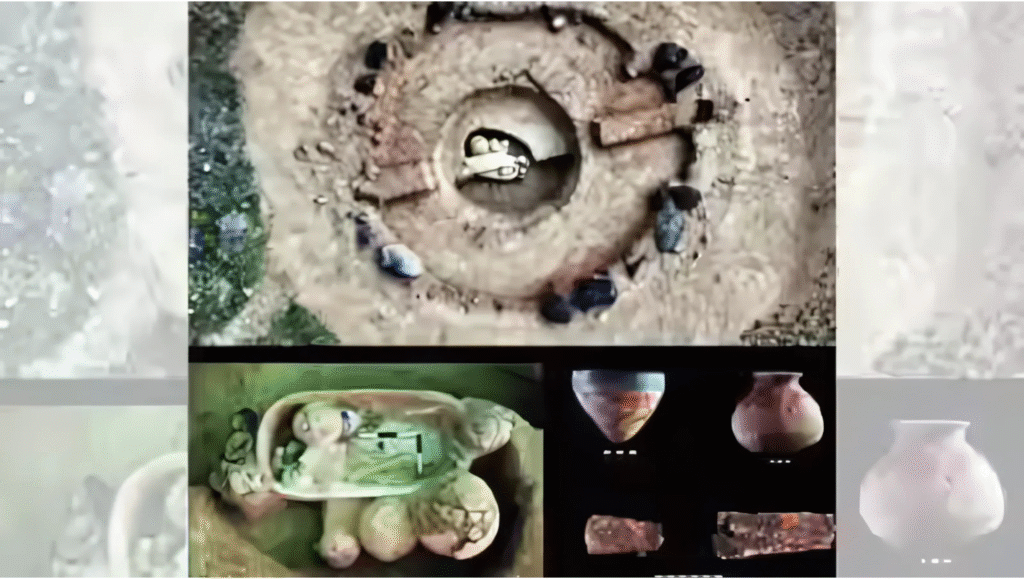Ancient Sarcophagus in Tamil Nadu Reveals Late Harappan Trade and Early Graffiti Tradition
Syllabus: History / Ancient India – Archaeology & Trade (UPSC Prelims)
Source: TOI
Context:
The first-ever AMS radiocarbon dating of a sarcophagus from Kilnamandi village, Tamil Nadu dates it to 1692 BCE, placing it in the Late Harappan period. Findings indicate south-north trade links and push back the timeline of Tamil Nadu’s graffiti tradition.
About Sarcophagus
What It Is:
- A terracotta coffin used for burials, containing charcoal, pottery, and grave goods.
- Provides insights into burial practices and socio-cultural life of ancient Tamilakam.
Where It Was Found
- Site: Kilnamandi village, Tiruvannamalai district, Tamil Nadu.
Key Features
- Date: 1692 BCE (Late Harappan period).
- Grave Goods: Etched carnelian beads (from Gujarat/Maharashtra), iron tools, pottery.
- Graffiti Marks: Fork-like symbols, semi-concentric ‘U’ shapes, vertical lines with wavy lines (~90% similarity with Indus Valley symbols).
- Clan Burial Indication: Graffiti marks restricted to certain burials, suggesting clan-based identity.
- Associated Finds: Iron spears (7–8 feet), collective urn burials in slab enclosures, high-tin bronze objects.
Significance
- Redraws Trade Map: Confirms south-north trade links during the Late Harappan period.
- Pushes Back Graffiti Tradition: Dates Tamil Nadu graffiti marks to the 17th century BCE.
- Evidence of Complex Society: Iron tools and organized clan burials indicate early social stratification.











